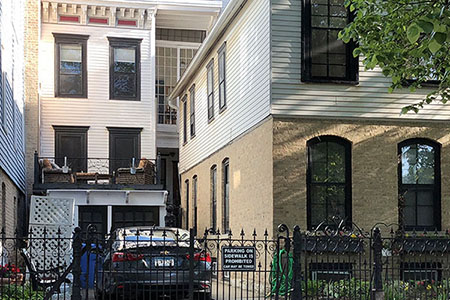
With interest rates as low as they are, refinancing your mortgage can lower your monthly expenses. But there are pitfalls.
Mar. 29, 2020 – If you’re a homeowner looking for ways to lower your monthly expenses, one of the alternatives you may be considering is refinancing your home. Interest rates are very low and reducing your rate on a large loan like a mortgage can result in significant savings. Refinancing your mortgage simply means you’re replacing your current mortgage loan with a new one. Although lowering interest rates to improve cash flow is one of the main reasons homeowners choose to refinance, other reasons include changing the loan’s term, switching from an adjustable-rate to a fixed-rate loan, switching from an FHA-backed loan to a conventional loan, or tapping into the equity in your home to finance projects like making needed repairs. If you’re looking for a company to provide some extra help with the refi process, Money.com recommends Quicken Loans for their great customer service. Quicken also owns Rocket Mortgage, which we liked best for its smooth online platform and experience. Should you refinance? Your first step in considering whether to refinance or not is to determine what you hope to achieve. For example, obtaining a lower monthly payment, thereby improving your cash flow, or going for a long-term savings on interest.
There are typically fees and closing costs associated with refinancing your loan. Though a mortgage refinance may offer a lower interest rate, consumers must factor in these fees and costs in order to determine whether refinancing makes financial sense over the life of the loan. Other considerations when evaluating whether to refinance include how much equity you have in your home, the amount of interest you have already paid, and how long you have left on the original mortgage. Important things to know about mortgage refinancing Just as being informed and prepared can help you find the best rates on primary mortgages, becoming familiar with the mortgage refinance market can help you find the best alternative for your situation. The following are some of the more important issues you should be aware of when refinancing... • Mortgage refinancing could extend the length of your loan. When you replace your mortgage loan with a new one via refinancing and you choose the same term, you could be agreeing to make mortgage payments for a longer period. For example, if you’re five years into a 30-year mortgage and then refinance into a new 30-year mortgage, you reset the clock and now have a new loan for 30 years, not 25. However, this could be a good financial move if the interest rate is such that you’re spending less money over the course of the new loan than you would have if you’d continued with the old one. Additionally, you could always elect to make voluntary prepayments if you are financially able and your lending institution does not charge penalties for doing so. This will shorten the term of the refinance. • There are costs and fees associated with refinancing a mortgage.
Take these into consideration when deciding if refinancing is right for you. To get an idea of the types of fees and related costs you may be assuming when refinancing, look at the documentation for your existing loan. These fees can usually be found in the document called Closing Disclosure. For loans originated prior to 2015, the form is called the Settlement Statement. It will give you a good idea of what these costs could be. You should also ask your refinancer for a list of fees. If there’s something on the list you don’t understand, ask for clarification. If you don’t get a clear answer, it may be time to look for another lender. When evaluating closing costs, you also want to see what your break-even point will be. If your closing costs are $5,000, and your monthly savings on mortgage payments are $100, it will take a little over four years (50 months) to recoup those costs or break even, so your savings won’t start until after you’ve reached this point. While this time period is standard for original mortgages, the preferred break-even point in refinancing should be about two years or less. If you plan on selling your home before your break-even point, the refinance will cost you money instead of saving it. There are companies that offer zero closing cost options for those who don’t have the cash to pay them upfront. This doesn’t mean you won’t have to pay these costs; it just means you don’t have to have the money to pay for them in order to close. In this case, the closing costs are either built into the interest rate, meaning a higher rate and monthly payment, or added onto the principal at a lower interest rate, which may extend the term of your loan. You need to evaluate both options to see what works best for you if you go for zero closing costs. • People with the best credit scores typically get the best interest rates.
FHA loans accept scores as low as 580. Getting a better interest rate, even if it’s just 0.015 percent lower, can mean significant savings over the life of the loan. It’s important to have at least 20 percent equity in your home before refinancing. If you don’t, you’ll have to pay for private mortgage insurance, which will increase your monthly payment. • Make sure you have a low debt-to-income ratio. This is the percentage of your gross monthly income that goes towards debt every month. In the past, mortgage lenders were more flexible when it came to this percentage, but now they are more stringent. The maximum debt-to-income ratio you can have is 43 percent, although most mortgage lenders prefer percentages much lower than that. • Always shop around. While only about half of borrowers consider a quote from more than one lender, it pays handsomely to do so. One recent Freddie Mac study found that getting an extra quote lowered homebuyers’ average interest rate by 0.166 percent, the equivalent of $400 in annual savings on a typical-sized mortgage. • Don’t forget traditional banks. Money’s list focuses on online mortgage lenders rather than brick-and-mortar lenders, but to make sure you find the lowest possible interest rate you should also check with traditional banks, such as Bank of America, JPMorgan Chase, and Wells Fargo, as well as local banks and credit unions that operate just in your area.
• Beware of prepayment penalties. If you’re looking to refinance your home, check with your current mortgage company to see if there’s a penalty for paying the loan off before it comes to term. Some mortgages, mostly those originated prior to 2013, impose hefty prepayment penalties. You want to make sure any advantage gained by refinancing your mortgage won’t be overshadowed by these penalties. • Avoid the common mistakes. Refinancing your home is just as complex as applying for a primary mortgage. When asked about the biggest mistake people make when refinancing, Gumbinger identified “confusing cash-flow improvement with actual savings.” When refinancing, you need to consider the long-term costs over the life of not one loan term but two.
“Certainly it will help,” says Gumbinger, “but getting the right product and loan term will bring the greatest value.” If you are looking to refinance, we talked with experts and analyzed some of the top lenders to help you figure out your best options...
|









 Read more lender reviews at
Read more lender reviews at 








